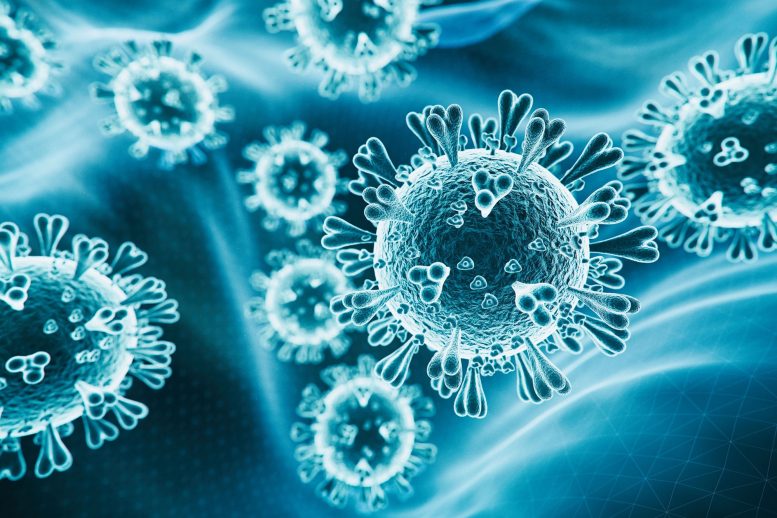
The research discovered that spike proteins from a bat virus, named Khosta-2, can infect human cells.
A virus discovered in a Russian bat that is related to SARS-CoV-2, the virus responsible for COVID-19, is likely capable of infecting humans and, if it spreads, is resistant to existing vaccines.
A team led by researchers at Washington State University’s Paul G. Allen School for Global Health discovered spike proteins from the bat virus, known as Khosta-2, that can infect human cells and are resistant to both monoclonal antibodies and serum from SARS-CoV-2 vaccine recipients. Khosta-2 and SARS-CoV-2 are both coronaviruses that belong to the same subclass of coronaviruses known as sarbecoviruses.
“Our research further demonstrates that sarbecoviruses circulating in wildlife outside of Asia – even in places like western Russia where the Khosta-2 virus was found – also pose a threat to global health and ongoing vaccine campaigns against SARS-CoV-2,” said Michael Letko, WSU virologist and corresponding author of the study published in the journal PLOS Pathogens.
Letko said that rather than just protecting against known versions of SARS-CoV-2, the finding of Khosta-2 underscores the necessity to create universal vaccinations to defend against sarbecoviruses in general.
“Right now, there are groups trying to come up with a vaccine that doesn’t just protect against the next variant of SARS-2 but actually protects us against the sarbecoviruses in general,” Letko said. “Unfortunately, many of our current vaccines are designed for specific viruses we know infect human cells or those that seem to pose the biggest risk to infect us. But that is a list that’s everchanging. We need to broaden the design of these vaccines to protect against all sarbecoviruses.”
Despite the fact that hundreds of sarbecoviruses have recently been identified, mostly in Asian bats, the majority cannot infect human cells. In late 2020, the Khosta-1 and Khosta-2 viruses were found in Russian bats, and at first, it seemed they posed little danger to people.
“Genetically, these weird Russian viruses looked like some of the others that had been discovered elsewhere around the world, but because they did not look like SARS-CoV-2, no one thought they were really anything to get too excited about,” Letko said. “But when we looked at them more, we were really surprised to find they could infect human cells. That changes a little bit of our understanding of these viruses, where they come from, and what regions are concerning.”
Letko teamed with a pair of WSU faculty members, first author viral ecologist Stephanie Seifert and viral immunologist Bonnie Gunn, to study the two newly discovered viruses. They determined Khosta-1 posed a low risk to humans, but Khosta-2 demonstrated some troubling traits.
The team found that like SARS-CoV-2, Khosta-2 can use its spike protein to infect cells by attaching to a receptor protein, called angiotensin-converting enzyme 2 (ACE2), found throughout human cells. They next set out to determine if current vaccines protect against the new virus.
Using serum derived from human populations vaccinated for COVID-19, the team saw that Khosta-2 was not neutralized by current vaccines. They also tested serum from people who were infected with the omicron variant, but the antibodies, too, were ineffective.
Fortunately, Letko said the new virus is lacking some of the genes believed to be involved in pathogenesis in humans. There is a risk, however, of Khosta-2 recombining with a second virus-like SARS-CoV-2.
“When you see SARS-2 has this ability to spill back from humans and into wildlife, and then there are other viruses like Khosta-2 waiting in those animals with these properties we really don’t want them to have, it sets up this scenario where you keep rolling the dice until they combine to make a potentially riskier virus,” Letko said.
Reference: “An ACE2-dependent Sarbecovirus in Russian bats is resistant to SARS-CoV-2 vaccines” by Stephanie N. Seifert, Shuangyi Bai, Stephen Fawcett, Elizabeth B. Norton, Kevin J. Zwezdaryk, James Robinson, Bronwyn Gunn and Michael Letko, 22 September 2022, PLOS Pathogens.
DOI: 10.1371/journal.ppat.1010828


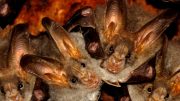
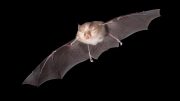

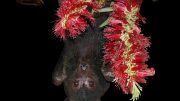
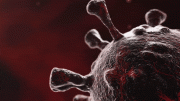
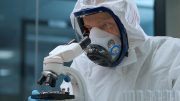

I haven’t had a sniffle in two years ever since I began spraying my nostrils and eyes with a 10ppm solution of colloidal silver. I sometimes alternate using a product called Xlear made from GSE and Xylitol. I have not been vaxxed. Simply killing the germs where they first enter the body makes sense to me.
Chinese monkeys/bats, now Russian bats??? 😄😄I’m just laughing…which “country” virus is next,?? Hmmm…nothing America causes?!lol..!!!
As long as our government keeps us under their control, of sorts, these viruses will continue to mutate and expand because the first one didn’t excite them enough. Come on people think about it. So now what we call ,”mexis” little blue pill will expand and ruin more lives than their “virus” ever will. You do know they can stop most cancers but FDA won’t approve it because no one gets rich. Really!!!
To me it looks more like political science than medical science, following some thirty-three months of being told that SARS-CoV-2 from China is something more than a ‘scamdemic,’ and we’re now being told that Khosta-2 has been shown to interact with the same entry receptor as SARS-CoV-2 and we need a universal vaccine. Again today, with only 1,109,851 (worldometers dot info) alleged US Covid-19 deaths reported, it’s about the same as we could expect of medical errors in the same time frame (Johns Hopkins researchers in May of 2016). What it really goes to show is that it’s vastly more important to learn of one’s particular personal food allergies, officially (FDA in the US) approved food poisoning (toxic additives like MSG, soy and TBHQ) and related/resultant medical errors, to prevent oneself from becoming infected with the worst pandemic of all; government/mainstream medicine ignorance and incompetence.
Mr Shaver: U need to take intro Chem then Life Sciences courses at closest community college. This will help make your views more accurate and in accord with true reality NOT political/fringe “reality”.
Brave statements, Murrieta Lives, congratulations on those. Been there, done that, perhaps even before you were born. The real truth is that in 1980 the US FDA approved the expanded use of added ‘cultured-free’ MSG knowing full-well then it would be harmful to ‘a subset of the population’ (FASEB reports on MSG to the FDA). In early 1981, at age 37, I became mysteriously, seriously chronically ill and all my doctor found was a high serum level of uric acid (gout) and a low oral temperature. In late 1981 I learned of my still mainstream medicine unrecognized/researched chronic subclinical non-IgE-mediated food allergies (e.g., THE PULSE TEST, Arthur F. Coca, MD, 1956; now free online in PDF format) through shortly thereafter medically abandoned “cytotoxic blood testing for food allergies” through an independent laboratory advertising in a then local newspaper. I didn’t learn of the toxicity of added MSG until the summer of 2000 from another adult male victim of the early 1980s. So, when I (still chronically ill and addressing it) write of “… becoming infected with the worst pandemic of all; government/mainstream medicine ignorance and incompetence,” I’m alluding to the fact that the $6 Trillion future US taxpayer dollars already misspent on Covid-19 will do nothing to protect you and those you care about from the chronic diseases (e.g., obesity, minimally) and premature mortality caused by undiagnosed allergies, toxic food additives and related/resultant medical errors already epidemic (e.g., “a national healthcare crisis”) by 2019; some 28 million premature deaths by then to my estimate. Statistically, in 2017 (the most recent year available in late 2019), an average of 7,703 Americans were dying daily from all causes, or a little over 2.8 million for the year (CDC/NCHS/NVSS). More illness details on the “About” page of my non-monetary Odyssee dot com video channel, if you can find it.
I use nutribiotic grapefruit seed extract and Xlear nasal spray everyday no flu or covid. No vax either google it
This Michael Letko article, ‘An ACE2-dependent Sarbecovirus in Russian bats is resistant to SARS-CoV-2 vaccines’, regarding Khosta-1 and of Khosta-2 bat coronavirus infectivity, is based on initial research done by Sergey Alkhovsky, Sergey Lenshin, and others, in the article, ‘SARS-like Coronaviruses in Horseshoe Bats (Rhinolophus spp.) in Russia’. Mostly with the Ivanovsky Institute of Virology in Moscow, Russia. They state that Khosta-1 bat coronavirus was collected in a Russian cave, but Khosta-2 had a more village type collection venue.
“The RNA of Khosta-1 was detected mostly in the greater horseshoe bats collected in Kolokolnaya cave….. The RNA of Khosta-2 virus was detected in two lesser horseshoe bats collected in the basement of a building at the Research Institute of Medical Primatology.”
How those bats got into that basement, a museum of monkeys and apes, we don’t know. Alkhovsky and Lenshin’s article indicates the Research Institute of Medical Primatology is located at 177 Mira Street, Veseoloe Village, Sochi, Russia, on the Black Sea. KHOSTA-1 was collected in a Russian cave. KHOSTA-2 was found to be very similar to bat coronaviruses BM48-31 and BtKy72 according to Alkhovsky and Lenshin.
“Khosta-2 genome, by contrast, had a near-identical similarity to BtCoV/BM48-31/2008
and BtKY72 (both 79.8% nt), as well as strains isolated in East and Southeast Asia.”
Alkhovsky and Lenshin mentions the Atlanta CDC sequenced bat coronavirus BtKy72 twenty seven times in their article, along with BM48-31. Their Table 2 shows KHOSTA-2 80.9% amino acid related to BtKy72 in the ORF1a protein, 79.7% identity in the S gene. Not close at all.
But Alkhovsky and Lenshin maintain the ‘nearly-identicalness’ of KHOSTA-2 to Atlanta CDC bat coronavirus BtKy72 and BM48-31 (Christian Drosten sequenced in 2010). Its like Alkhovsky and Lenshin have ‘their eyes’ on BM48-31 and BtKy72. Both Bm48-31 and BtKy72 were first seen ‘together’ at the Atlanta CDC in June 2019.
“BtKY72 genome shared an 81% overall nucleotide identity to its nearest relative, BtCoV/BM48-31”, in the article, ‘Complete Genome Sequence of a Severe Acute Respiratory Syndrome-Related Coronavirus from Kenyan Bats’, by Ying Tao and Suxiang Tong of the Atlanta CDC
Is it this 81% ‘nearest relative’ between BM48-31 and BtKy72 by the Atlanta CDC, that seemingly is drawing Alkhovsky and Lenshin ire. The ‘near identicalness’ of KHOSTA-2, of 80.9% in the ORF1a and 79.7% in the S gene to BtKy72, is Alkhovsky and Lenshin way of putting into question the relatedness of any of those bat coronaviruses, putting into question the up to now accepted evolutionary history of Covid-19. Finding KHOSTA-2 in a museum of apes, a parody on where BtKy72 was sequenced.
Alkhovsky and Lenshin conclude their article by stating that neither Khosta-1 and Khosta-2 have furin cleavage sites, so can’t infect by that route.
“The notable feature of SARS-CoV-2 is a four-amino acid insertion (RRRA) at the junction
of S1 and S2 subunits of the spike protein. This insertion forms polybasic cleavage
site for furin proteases and probably has a role in determining viral infectivity and pathogenicity [18]. Analysis of this region showed that Khosta-1 and Khosta-2, similar to other bat SARS-CoV-like viruses, do not have insertions in this region that could form an additional site for furin protease (Figure 5B).”
Also see Figure 5B in that article. Michael Letko, one of the authors, ‘An ACE2-dependent Sarbecovirus in Russian bats is resistant to SARS-CoV-2 vaccines’, should be notified, for he only examined the receptor binding motifs (RBM) in Khosta-1 and Khosta-2 Spike genes, to determine their infectivity. He did not take into account that Khosta-1 and Khosta-2 don’t have furin cleavage sites that would allow passive RNA to escape into human cells, after activated, to ultimately infect those cells.
Besides these Khosta types, there are 8 coronaviruses that infect humans. The only ones that are worse than a common cold are MERS, SARS, and Covid-19. My independent research has analyzed all of them, and I’ve just finished Khosta-1 and Khosta-2. In my opinion, these new ones are also just common cold types, with no vaccine needed. Specifics on the 8 older ones can be found by searching YouTube for “Coronavirus – Using Your DNA Against You”.